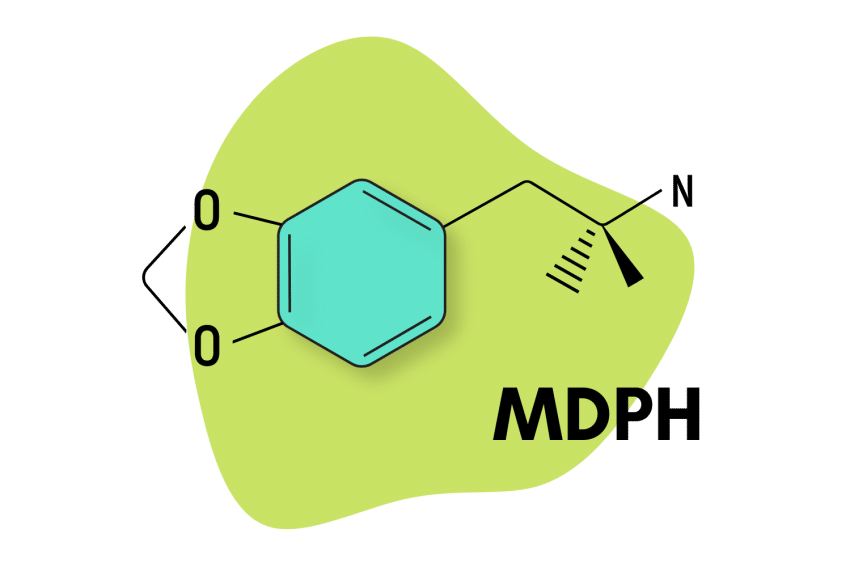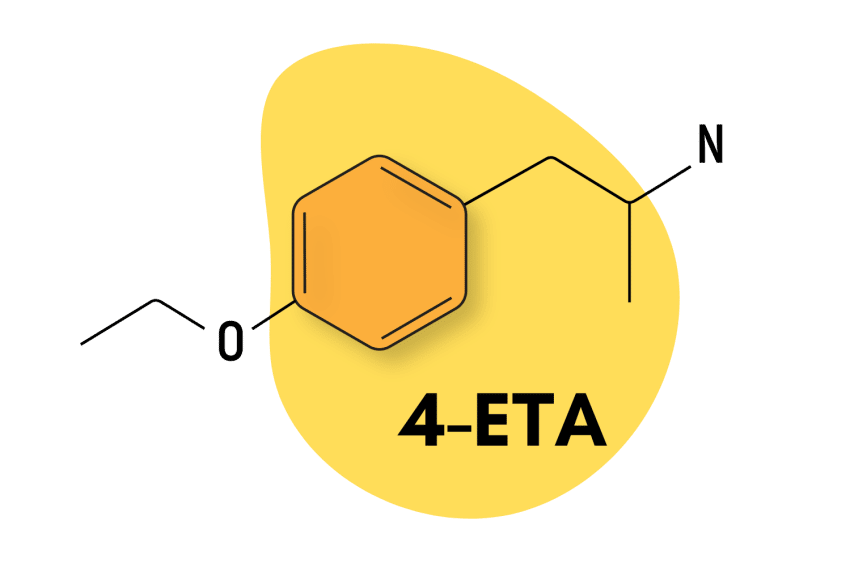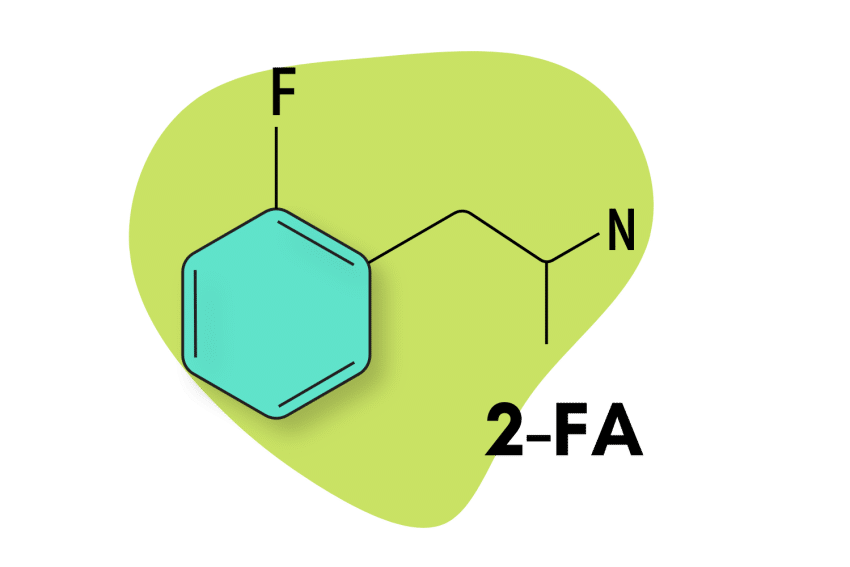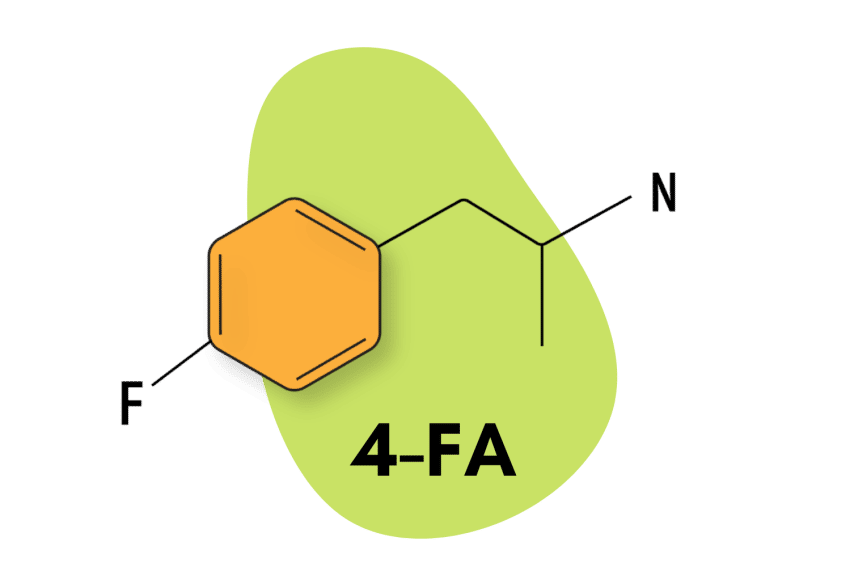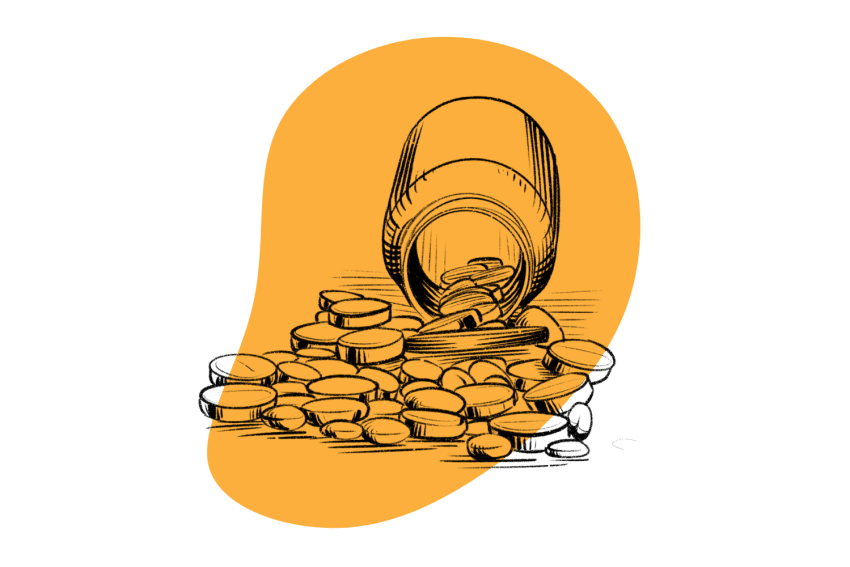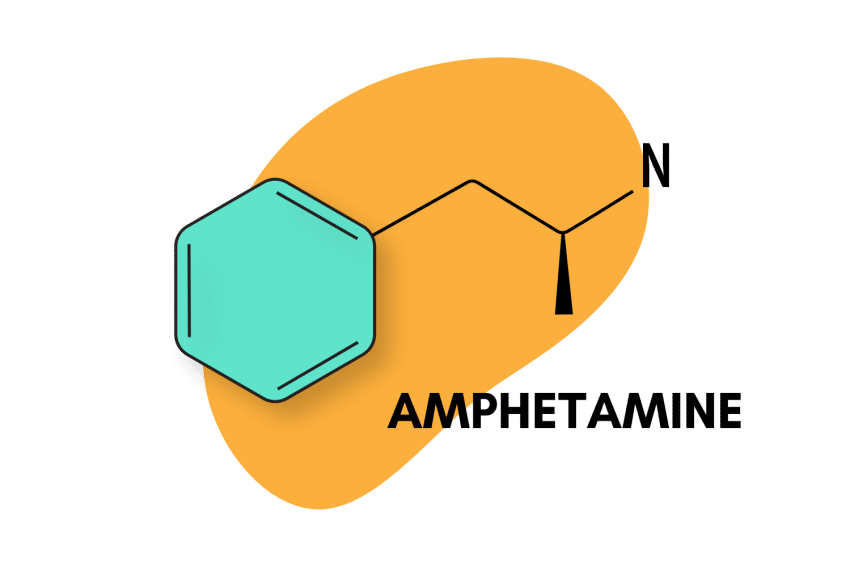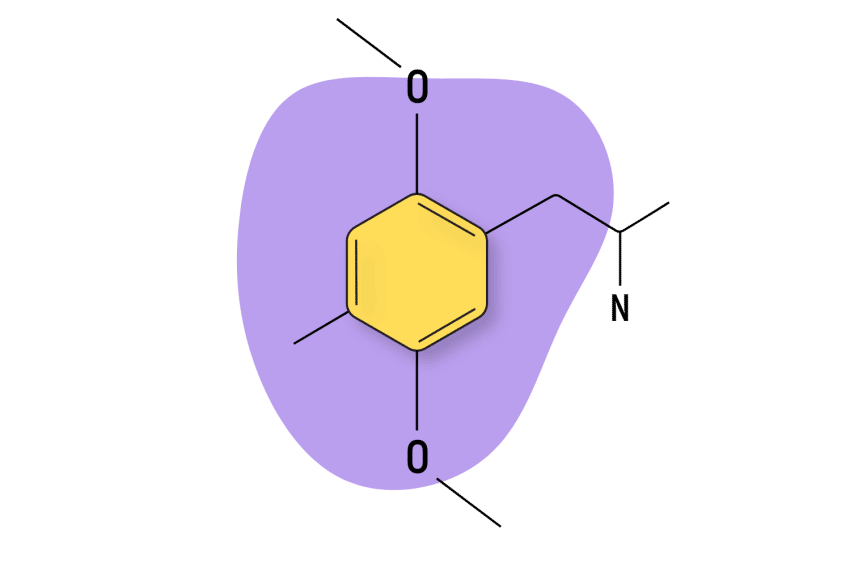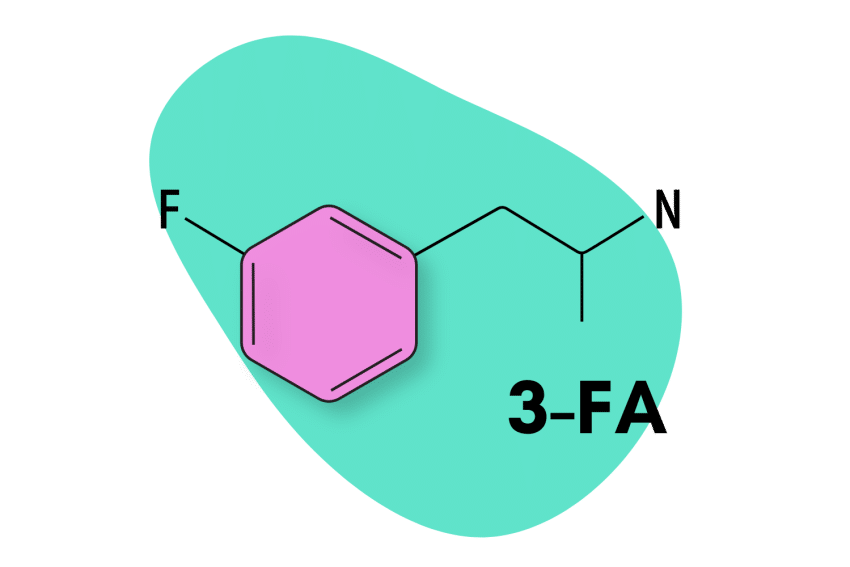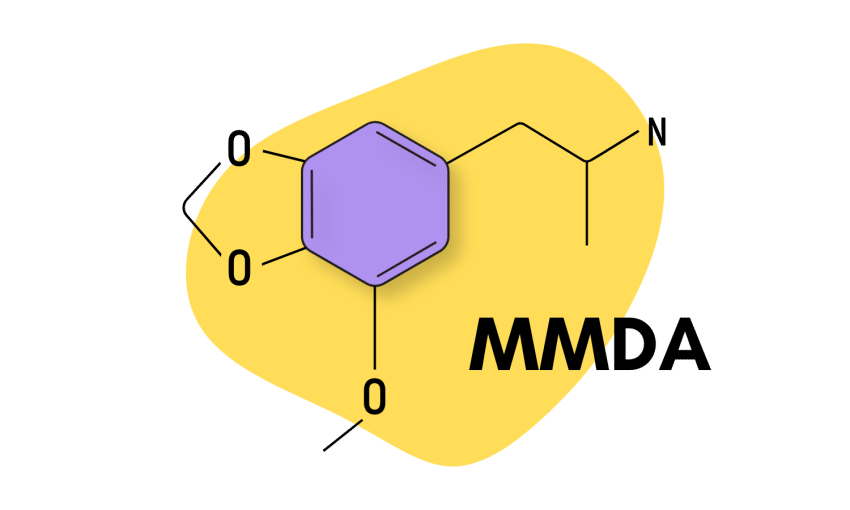2-FEA: A New and Mysterious Amphetamine
2-FEA is a fluorinated amphetamine about which very little is known. The compound displays a primarily dopaminergic profile, but details on its effects are scarce.
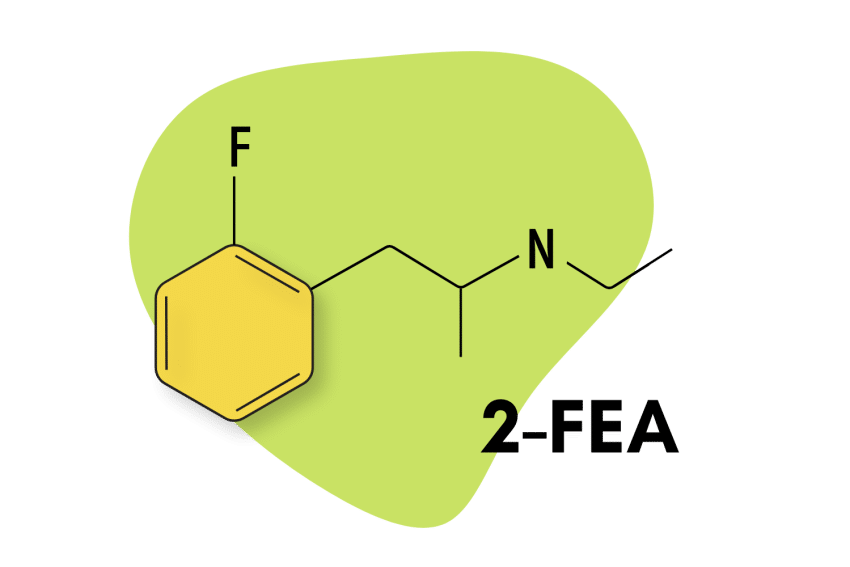
What is 2-FEA?
2-Fluoroethamphetamine or 2-FEA is a fluorinated amphetamine substitute. As such, this compound holds a high degree of structural similarity with other members in its class, such as 3-FEA and 3-FMA.
The defining aspect of fluorinated amphetamines is the addition of a fluoride group attached to the central ring moiety of the base amphetamine molecule.
The addition of a fluoride group is thought to improve bioavailability, but given the considerable amount of pharmacological diversity in this subtype, it also appears to create somewhat unpredictable effects profiles. 2-FEA is similar to some of its close relatives but very different from others.
As a compound, 2-FEA has less-than-average potency for its subtype and displays a stimulant-heavy profile of effects. Another notable characteristics are its rapid pharmacokinetic (PK) values: the duration of effects is only around one to two hours.
2-FEA Specs
| Chemical Name | 2-Fluoroethamphetamine |
| Level of Risk | Moderate |
| Other Names | 2-FEA |
| Most Common Side Effects | Anxiety, overstimulation |
| Duration of Effects | One to two hours |
| Estimated Threshold Dose | 15 mg |
| Common Dose | 20 to 30 mg |
| Legality/Status | Research Chemical |
| PubChem ID: | 20027466 |
| CAS# | 3823-29-8 |
Trip Sitter Safe 2-FEA Guidelines
- 🐍 I understand why psychedelics should be treated with respect
- ⚖️ I’m familiar with the laws for 2-FEA in my country & state
- 🍄 I’m familiar with and confident in the dose I’m taking
- 🧪 I’ve tested a sample of the substance I’m using with a drug-testing kit
- 💊 I’m not mixing any medications or other substances with 2-FEA
- 🏔 I’m in a safe & comfortable environment with people I trust
- 🐺 One of the members of my group is responsible and sober (AKA a trip sitter)
- ⏳ I have nothing important scheduled for after the trip
- 🧠 I’m in a sound & healthy state of mind
- ❤️ I don’t have any underlying health issues — don’t take 2-FEA if you have underlying heart, neurological, or psychiatric disorders
- 👭 Use the buddy system — 2-FEA can remove your inhibition and allow you to make unsafe decisions, always stay with people you trust, and never go out alone
- 🌵 I understand the risk of dehydration — it’s easy to become dehydrated on 2-FEA, so make sure you’re drinking a cup of water every hour while using 2-FEA
- 🦻 Protect your hearing — music can be intoxicating while on 2-FEA, but protect your hearing and bring ear protection before you go out to a club or concert
What Are The Effects of 2-FEA?
According to information found in online drug forums, the effects of 2-FEA appear to be subtle and difficult to characterize. Most reports describe a relatively mild-acting drug with few side effects. 2-FEA seems to favor effects on the stimulant side of the psychostimulant spectrum, but some serotonergic action is distinctly present.

The following list of effects has been compiled through the contributions of several users who have tried 2-FEA:
- Physical effects — Stimulation, Sedation, Physical euphoria, Tactile enhancement, Stamina enhancement, Abnormal heartbeat, Increased heart rate, Increased blood pressure, Appetite suppression, Bronchodilation, Dehydration, Dry mouth, Frequent urination, Increased bodily temperature, Increased perspiration, Nausea, Pupil dilation, Teeth grinding, Temporary erectile dysfunction, Vasoconstriction, Restless legs
- Visual effects — Drifting(defined as the experience of the texture, shape, and general structure of objects and scenery appearing progressively warped, melted, and morphed across themselves), Brightness alteration, and Hallucinations.
- Cognitive effects — Analysis enhancement, Anxiety, and Paranoia, Cognitive euphoria, Compulsive redosing, Delusions, Disinhibitions, Ego inflation, Emotion suppression, Focus enhancement, Increased libido, Increased music appreciation, Motivation enhancement, Bodily control enhancement, Thought acceleration, Thought organization, Wakefulness, Time distortion
- After Effects — Anxiety, Cognitive fatigue, Delusion, Depersonalization, Depression, Headaches, Irritability, Motivation suppression, Psychosis, Thought deceleration, Wakefulness
The compilation of subjective reports on 2-FEA is not a scientific way to approach its effects profile, but when dealing with designer drugs, it’s often the only method available. The enormous amount of variety with which these drugs appear means that researchers can’t keep up. There are simply not enough research grants to study the pharmacology of each individual designer drug.
As such, the effects listed above should be treated with a healthy degree of skepticism. Using 2-FEA will not necessarily produce all of them. The list is more of a possible range of effects that might appear, and it’s quite likely that there are other effects that are not listed. Using higher doses will likely bring on more of the list than a lower dose.
The effects of 2-FEA seem to offer a somewhat paradoxical —or, in medical terms, “antagonistic”— combination of stimulating and sedating effects. This indicates there is both dopaminergic and serotonergic action. The stimulating effects are typically more prominent in strong dosage ranges and tend to become prominent after the peak effects have subsided.
How Does 2-FEA Work?
In a class of compounds that already suffers from a lack of research, 2-FEA is an even more obscure drug. Research on its pharmacology is practically non-existent, and so we’re forced to generalize based on what we know about its subtype and substituted amphetamines in general.
Psychostimulant amphetamines exert their effects through three main mechanisms of action:
- Inhibiting the reuptake of neurotransmitters
- Blocking the clearance of neurotransmitters
- Reversing the polarity of neurotransmitter transporters
These three mechanisms often combine with secondary pathways in order to create the given effects profile of an amphetamine compound.
However, all of them have the same basic purpose: to increase the level of active neurotransmitters in the brain.

Amphetamine compounds target three basic neurotransmitters — dopamine, norepinephrine, and serotonin — as well as secondary targets like adrenergic receptors. The differences displayed by amphetamine drugs in their affinity to these neurotransmitters largely account for their varied effects, which is to say, the effects neurotransmitters have on receptors are, by and large responsible for the effects of amphetamines. This is quite important to understand.
In this sense, dopamine and norepinephrine have been linked to stimulant-like effects, such as cognitive acceleration, psychomotor stimulation, and anxiety, while serotonin has been linked to empathogenic effects — like feelings of social empathy and connectedness — and, to a lesser degree, psychedelic effects as well.
Based on what we know about 2-FEA, it’s almost certain that, due to its stimulant profile, it is a primarily dopaminergic compound with moderate to significant activity at the norepinephrine receptors and little to no action at the serotonin receptor.
We have no information on the mechanisms utilized by 2-FEA but, like all the other members in its class, it’s likely a reuptake inhibitor with the added capacity to induce the release of neurotransmitters from the presynaptic neuron.
Is 2-FEA Addictive?
Like practically all other stimulants, 2-FEA can be considered moderately addictive with a high potential for abuse. Heavy and frequent use of 2-FEA can result in psychological addiction and, in extreme cases, symptoms of physical withdrawal.
The addictive qualities of stimulants, especially amphetamine-based stimulants like cocaine, are well known, but it’s still important to place them in their proper context.
Stimulant drugs do not appear to create the intense physical addiction symptoms that often manifest in other types of drug use, like opioids and benzodiazepines. That is not to say that symptoms of physical addiction can’t manifest, but they’re certainly a lot rarer and usually come as a result of heavy recreational abuse.
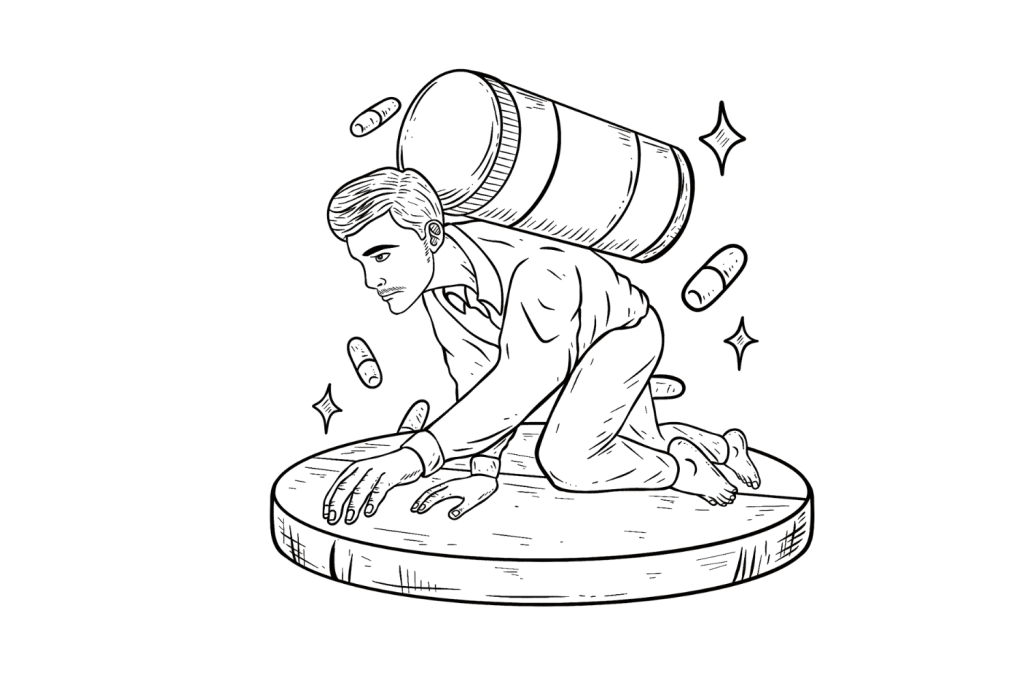
The addiction mechanism of drugs like 2-FEA and cocaine tends to be explained more along “psychological” and “behavioral” lines. For instance, take the use of rat self-administration studies. In these studies, rats will be presented with some sort of stimulant substance, and their willingness to consume it will be measured with certain parameters. It is often found that rats will begin to exhibit habits of compulsive redosing way before the symptoms of physical addiction can set in.
What this suggests is that stimulant addiction is highly linked to the brain’s reward circuitry. In other words, stimulants make people feel good, and the basic feedback loop of taking more and more of them can be difficult for people to break. In the human context, this reality becomes a lot stronger when people fixate on stimulants as a way to solve their problems. For example, someone who believes they cannot be productive if they don’t utilize a study drug or another person who feels they cannot socialize without the help of MDMA.
Is 2-FEA Safe? Risks & Side Effects
2-FEA can be considered a relatively safe drug when it’s used responsibly, but stimulants will always carry certain risks.
Amphetamines with strong stimulant action can bring on adverse effects that, if left unchecked, can be quite hazardous, especially for cardiovascular health. Increased heart rate and blood pressure, tachycardia, palpitations, and general feelings of restlessness and anxiety are well-known stimulant side effects. In a worst-case scenario, these adverse effects could lead to cardiac arrest. And stimulants can also be dangerous in the long run. For instance, amphetamines with serotonergic action are known to be cardiotoxic.

There are also certain risks tied to the “empathogenic” effects of certain amphetamines. The use of compounds like MDMA has been found to deplete the brain’s store of serotonin neurotransmitters, which can significantly alter brain chemistry and mood. And the “after-effects” of serotonergic drugs are also considerable: feelings of depression and cognitive fatigue may last for even 10 days.
Harm Reduction: 2-FEA
All recreational drug users should be aware of basic harm reduction tenets. Here are some of the most important to keep in mind:
1. Stick to One Drug
Did you know the vast majority of drug fatalities occur with more than one drug in the victim’s system?
That’s right.
Using multiple drugs will always increase a user’s risk levels.
Given the vast amount of drugs that exist, there are, of course, several dimensions to this.
Smoking some cigarettes while using MDMA will not place you at undue risk, for example, but drinking alcohol just might.
In sticking to this rule, users will want to limit themselves to one “potent” drug — and that includes alcohol.

Also, users should not fall into the common mistake of “balancing” out the effects of one drug with another. The subjective effects might make one feel more in control, but in the body, the risks will definitely increase.
2. Test Your Drugs
One of the ever-present risks inherent in illegal drug use is the possibility of adulteration.
Users are strongly encouraged to source from dealers who they have experience with and are relatively trustworthy, but they should never assume that a drug is free of adulterants.
Recently, the introduction of fentanyl, an extremely dangerous opioid, as a “cutting” substance has made the prospect of adulteration ever scarier.
For this reason, all recreational users should purchase a reagent test kit. Costing around 40 dollars, these test kits are quite affordable and provide materials for hundreds of tests.
3. Break Up Your Intended Dose
Besides adulteration, one of the biggest dangers in recreational drug use is acute intoxication (or overdosing).
Luckily, the threat of an overdose is much easier to control.
There is one key factor in avoiding an overdose: users must have a general idea of what type of dose they can reasonably handle, which usually means they have at least some experience with the drug.
If it’s your first time, then go for an extremely low or even threshold dose, as it’s important to understand how you’ll react to the drug.

If you’re not sure what drug it is and thus are unsure of the appropriate dosage, we recommend not to do it: there are plenty of drugs with enough potency to be highly active even when consumed in low doses.
Once users have a handle on their appropriate dose, we then advise them to split this dose into two halves or even four quarters. Do not ingest a second dose until the effects of the first have manifested. By utilizing this method, it’s hard for users to overshoot their preferred dose.
2-FEA Drug Interactions
Certain drug interactions while on stimulants can be quite dangerous. Watch out for the following drugs when using stimulants:
Alcohol & Other Depressants
The effects of depressants can mask the effects of stimulants and vice versa. This will often encourage compulsive redosing and can place a user at risk of acute intoxication. Also, when the stimulant effects fade, the depressant effects, which usually last longer, can overwhelm the user.

Amphetamines & Other Stimulants
Combining stimulants will result in what is known as an “agonistic interaction.” These types of interactions, where multiple drugs are working towards the same result, have the effect of raising all of the risks already inherent in the drug.
2-FEA Contraindications (When NOT to Use it)
Do not use 2-FEA if you have any of the following contraindications:
- Advanced arteriosclerosis
- Cardiovascular disease
- Moderate to severe hypertension
- Hyperthyroidism
- Known hypersensitivity or idiosyncrasy to sympathomimetic amines
- Glaucoma
- History of drug abuse
- Use of monoamine oxidase inhibitors
- Use of other central nervous system stimulants
- Pregnancy and lactation
Final Thoughts: 2-FEA
The effects of 2-FEA appear to be somewhat mysterious and contradictory, although this might also reflect the small amount of time it’s been available. Most users agree that 2-FEA is a stimulant close to 2-FMA but slightly less potent, which would imply that 2-FEA is a highly “functional” stimulant like, for example, Adderal.

However, user reports also highlight the psychedelic aspects of 2-FEA, which would make it a poor option for productivity-related tasks.
It’s possible that in low doses, 2-FEA only exhibits its stimulant effects, while the higher ranges bring on the complete spectrum of effects.
It’s also interesting that despite boasting psychedelic effects, 2-FEA does not seem to have any of the empathogenic effects normally associated with this receptor.
We speculate that in low doses, 2-FEA could be a suitable choice for stimulating creative and artistic work, while in its higher doses, it acts more like a party drug.

